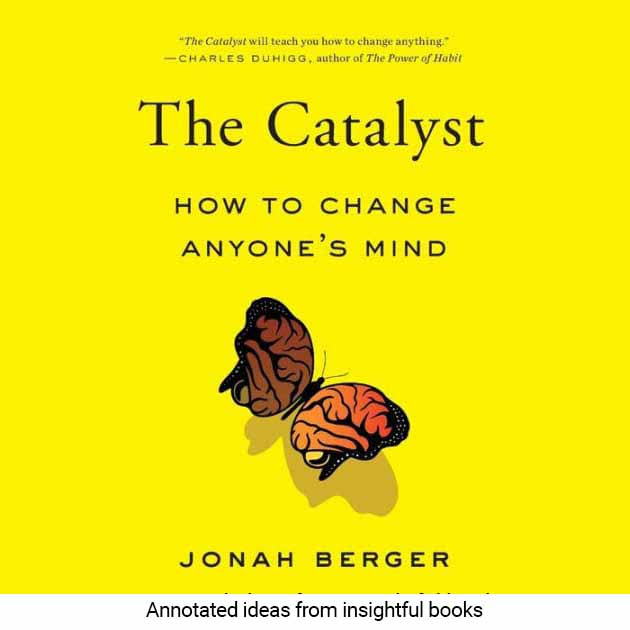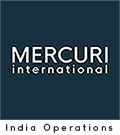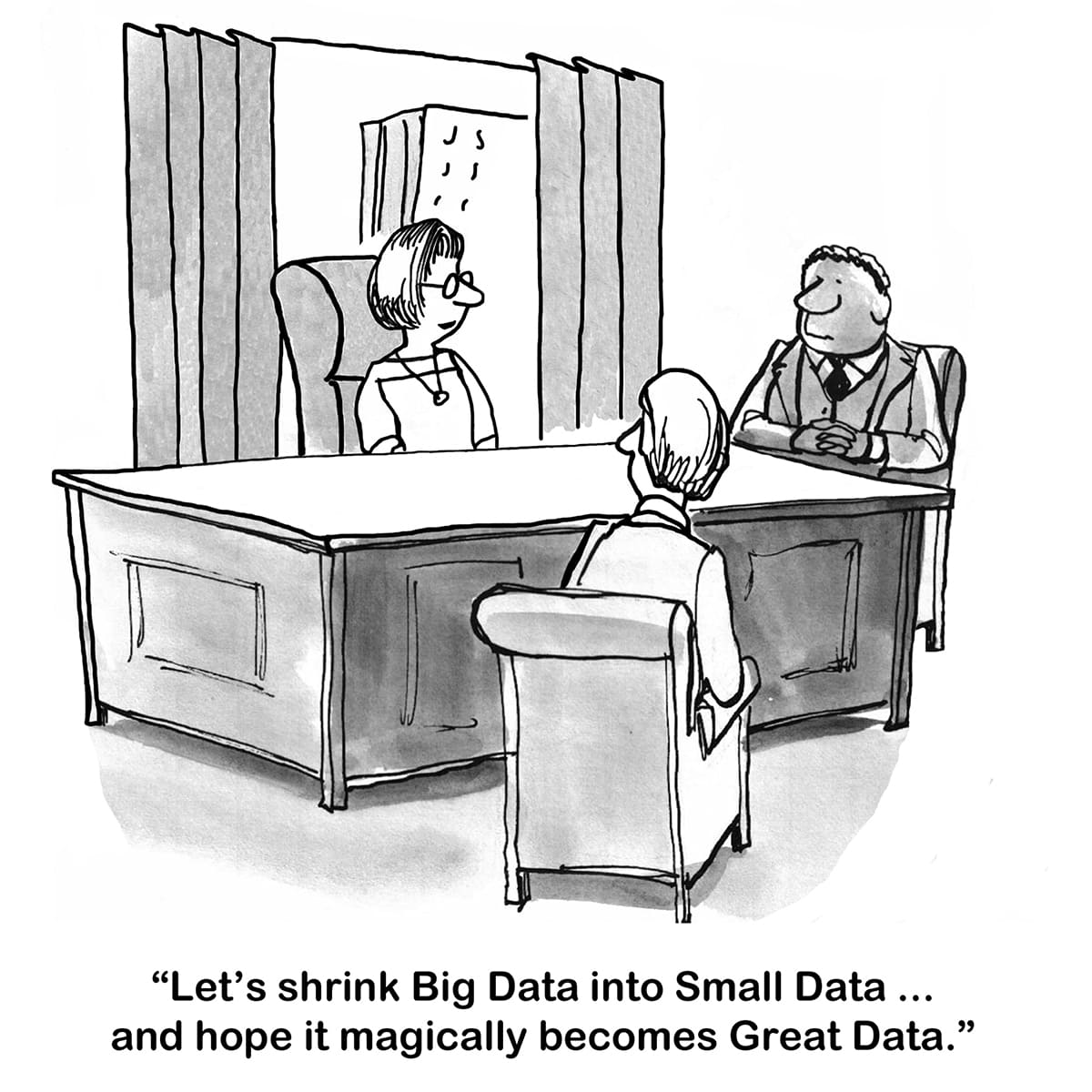Must Read
Annotated ideas from insightful books
A book to change minds with
Introducing ‘The Catalyst’ , Jonah Berger - best-selling author and marketing professor at the Wharton School at the University of Pennsylvania says:
“Everyone has something they want to change. Employees want to change their boss’ mind and leaders want to change organizations. Marketers want to change customers’ minds and spouses want to change their partner’s opinion. Change is hard …. Could there be a better way?”
Berger points out that in trying to change minds the usual tendency is to push and push harder.. “Sometimes change doesn’t require more horse power. Sometimes we need to unblock the parking brake”. How can one discover the hidden barriers preventing change, and getting them out of the way?

Berger identifies 5 roadblocks:
- Reactance,
- Endowment,
- Distance,
- Uncertainty,
- Corroborating Evidence
The 5 principles are made easier to remember with the acronym REDUCE
Below is a summary of the 5 roadblocks
Principle 1 – Reactance — Any idea or suggestion, that diminishes the autonomy of an individual creates a subconscious resistance. This phenomenon called reactance.
When pushed, people push back, invoking an innate anti-persuasion system.
There are 4 ways to beat reactance
(1) Provide a menu
(2) Ask, don’t tell
(3) Highlight a gap
(4) Start with understanding.
Principle 2: Endowment
“People are wedded to what they’re already doing. And unless what they’re doing is terrible, they don’t want to switch” says Jonah Berger. This kind of status quo bias, we encounter everyday in our lives. Like, it took Berger an inordinately long time to make a simple switch to a new even more attractive and comfortable smart phone.
What can we do to reduce the effects of endowment? Two possibilities (1) surface the cost of inaction, and (2) ‘burn the ships’. When a financial advisor suggests to a young professional to invest more in equity and less in bonds, these are the actions that usually work.
Principle 3: Distance
“If new information is within people’s zone of acceptance, they’re willing to listen. But if it is too far away, in the region of rejection, everything flips” says Berger. His take being that, big changes require asking for less or gently facilitating small incremental steps forward instead of pushing for massive makeovers
There are 3 ways catalysts mitigate Distance (1) They find the movable middle (In a sales situation, you can bring about big shifts in attitude by making it easy for the fence sitters to support the proposal), (2) They ask for less (Often in sales Customer resistance is overcome only in small incremental steps) and (3) They switch the field to find an unsticking point (Try and win over the rank opponents)
Principle 4: Uncertainty
“Change often involves uncertainty” Berger points out “Will a new product, service or idea be as good as the old one? It’s hard to know for sure, and this uncertainty makes people hit the pause button, halting action”
There are 4 strategies to surmount inaction due to Uncertainty (1) Harness freemium, (Allow people to try out before committing) (2) Reduce up-front costs (This encourages more people to sign up) (3) Drive discovery (Forget Uncertainty. If your potential Customers can’t even find you, thinking of persuasion will not help. So, make it possible for people to find you, in the first place) and (4) Make it reversible (Your potential Customers will be thankful for it and emerge from their shells to give your offering a try)
Principle 5: Corroborating Evidence
“Sometimes one person, no matter how knowledgeable or assured is not enough. Some things just need more proof. More evidence to overcome the translation problem and drive change”
3 factors will decide if the evidence you marshall will change minds (i) The science of when (Timing in presenting the evidence can shore up or diminish its credibility (2) When to concentrate or spread out scarce resources (Calibrate your efforts by being aware of whether you are changing individual minds or large groups) (3) Pebble and the more likely it is to be a boulder (The more expensive, time consuming, risky or controversial something is, it less likely to be pebble and more likely to be a boulder when it comes to moving)
Reflection Question: How many of these ideas can you apply to your sales practices, to persuade people and change their minds?
“You don’t need a big close as many sales reps believe. You risk losing your customer when you save all the good stuff for the end. Keep the customer actively involved throughout your presentation, and watch your results improve.”
– Harvey Mackay –







